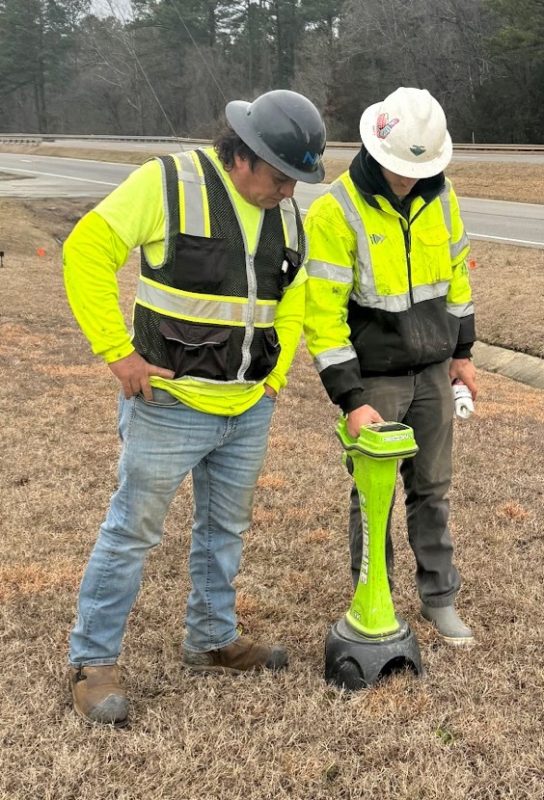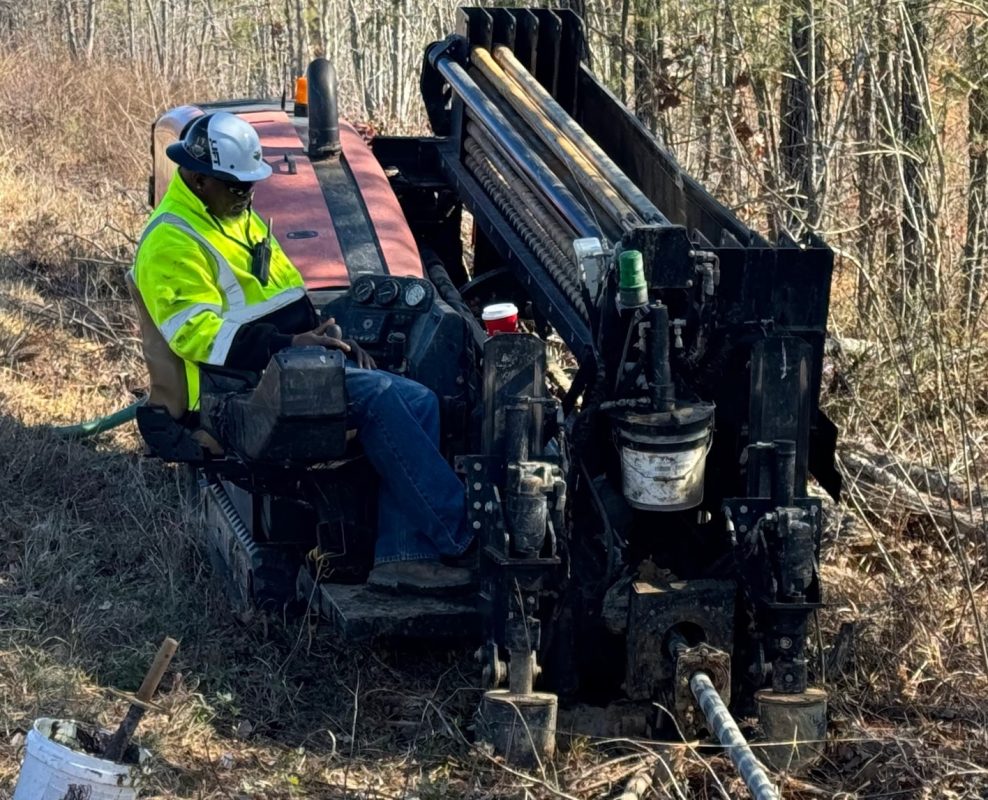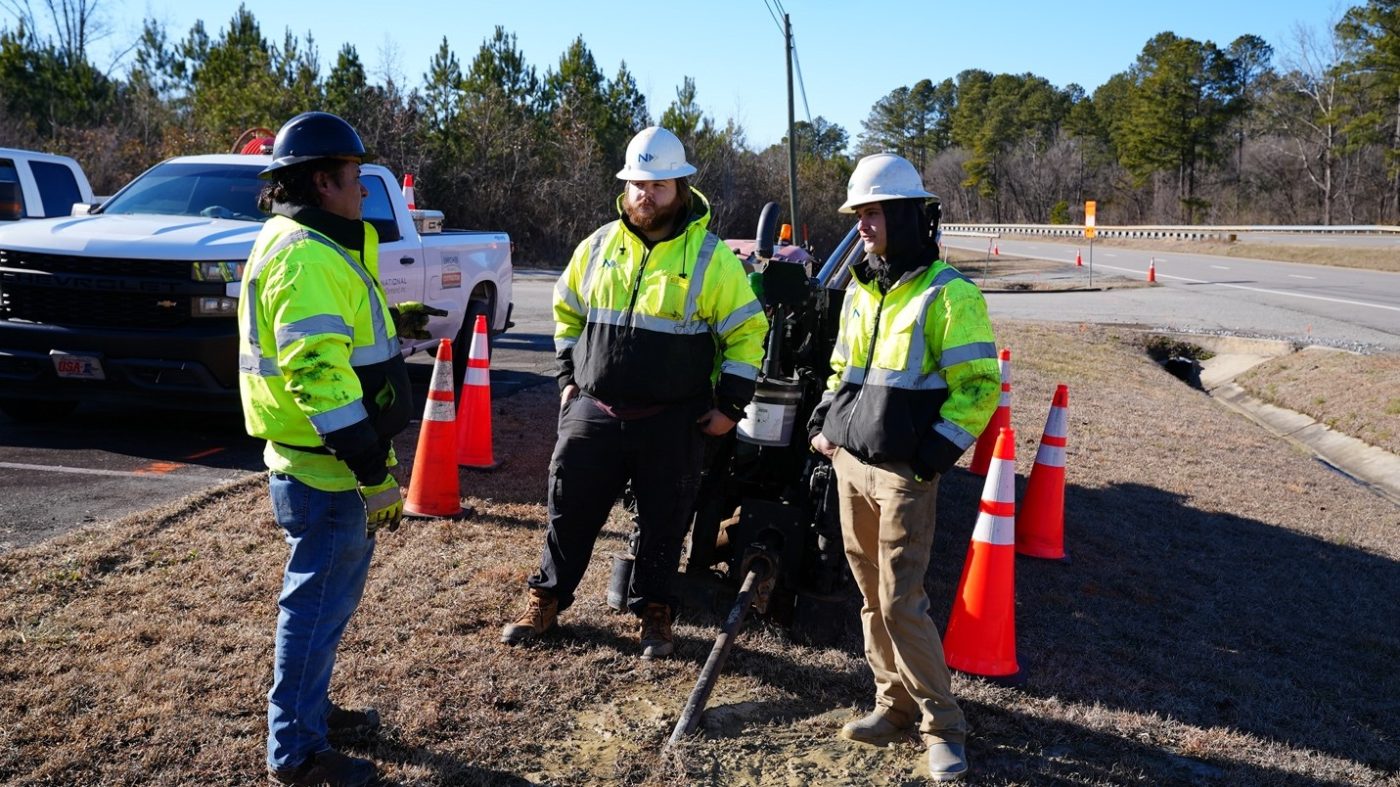Beneath the Surface: How Directional Drilling Shapes the Future of Infrastructure
When you think about the speed at which technology advances, you probably don’t think about what’s happening beneath the surface.
But it’s the work being done below the streets, by skilled directional drill operators, that makes everything above the surface, from fiber optic networks to utilities, possible.
Directional drilling, often referred to as “HDD” (Horizontal Directional Drilling), may sound like a small part of the bigger picture, but trust me, without it, the connected world we know wouldn’t be nearly as connected. In fact, these technicians are the quiet masterminds behind high-speed internet, reliable utility services, and the digital framework supporting modern life.
Curious about how directional drilling works? Let’s dig into it (literally)!
What Exactly is Directional Drilling?
Imagine you need to lay fiber optic cables under a busy highway, a river, or someone’s prized garden. Digging up the ground isn’t an option: That would be chaotic, right? This is where directional drilling comes in.
In simple terms, directional drilling allows technicians to install underground cables without disturbing the surface. Picture it as a tunnel boring machine that weaves through the earth at a specific angle, avoiding obstacles and pushing conduit or cables through to the other side.
Think of it as the plumbing for the data world. A lot of work happens without anyone seeing it, but without this invisible backbone, much of the technology we depend on wouldn’t function the way it does. From internet connections to water systems, directional drilling is key to making it all happen seamlessly and without fuss.
But let’s be real. This is no ordinary trench-digging gig. Directional drilling is an art form that requires a mix of precision, adaptability, and, above all, patience. You can’t just drill and hope for the best. No, this job takes methodical planning, expertise, and an understanding of the landscape beneath your feet.
The Day-to-Day of a Directional Drill Operator
Being a directional drill operator isn’t your average 9-5 gig. Picture starting your day at dawn, working through mud, rocks, and sometimes rain. You’re not just sitting in a seat pushing buttons; you’re reading the terrain, making decisions, and adapting to what’s underneath the surface.
These professionals aren’t just machine operators: they’re part engineer, part scientist, and part problem solver. With GPS-guided systems, drillers navigate their way underground, adjusting their rigs as they go, monitoring soil conditions, and ensuring the cables are laid with precision. And it’s all done on-site, under challenging weather conditions and with constant surprises (like that sudden rock ledge you didn’t see coming).

It’s a job where no two days are ever alike. One day, you could be drilling through soft sand, and the next, you’re battling dense clay. You’ve got to think fast, make decisions in real-time, and ensure the work goes smoothly, because when something goes wrong underground, it’s usually costly and time-consuming to fix.
Drill operators are constantly adjusting their approach based on the ever-changing conditions of the land. Directional drilling is a delicate balance of science and instinct. Just like a chef adjusting the seasoning to get the perfect taste, a drill operator adjusts pressures, angles, and speed to make sure the bore is heading in the right direction.

The rig might be the operator’s main tool, but their eyes and mind are crucial in anticipating changes and addressing any bumps along the way. From the rise and fall of the equipment to the shifts in the earth itself, the operator must be alert, observant, and ready to tweak the bore path as they go. And, safety always comes first … no matter what!
So what does a typical day look like for a directional drill operator?
It usually starts early. The team arrives at the job site, checks the equipment, and prepares to break ground. The morning hours are spent gathering data, checking for potential underground utilities, and setting up the machinery.
It’s really a mix of excitement and tension as everyone knows the day’s work could run smoothly or present unexpected challenges.
By mid-morning, the crew is already deep into the directional drilling process, and the operator is navigating the machine through layers of earth, ensuring the conduit follows the prescribed path.

There’s a rhythm to the work: push, steer, pause, check the pressures, adjust the fluids. Rinse. Repeat. It’s a routine that has been tested and proven over the years. You can’t argue with results and that’s why we do it the way we do.
But that’s not to say it’s all a smooth process. The operator must continuously adjust to the unexpected. In fact, much of the day’s work is about overcoming challenges; figuring out the best way to handle a patch of rocky earth or navigating around an unmarked utility line. These challenges keep the job exciting but require problem-solving skills that go beyond just technical knowledge. It’s about thinking on your feet and adapting quickly.
The Tools of the Trade: More Than Just Machines
Let’s talk gear. These rigs aren’t your weekend DIY tools; they’re high-tech machinery capable of boring tunnels under streets, rivers, and mountains, all while maintaining pinpoint accuracy. Take the Ditch Witch JT20 or Vermeer D24x40; rigs that are capable of pushing steel pipes through the earth like it’s butter.
Operators aren’t just sitting behind a joystick. These machines are equipped with onboard computers that help control torque, track location, and monitor pressure in real-time. But, much like any good tool, it’s the operator’s expertise that makes it work seamlessly.
These high-tech rigs aren’t just about raw power. They’re a combination of precise engineering and computer systems that monitor everything from fluid pressures to soil conditions. The onboard computer tracks the machine’s location as it drills, ensuring that the drill stays on course. The systems are constantly working in the background, collecting data that helps improve the operator’s control over the directional drilling process.
You’ve got your pipe racks, reamers, and mix tanks, all contributing to the complex operation. Then, there’s the mud; the stuff that keeps everything flowing smoothly. Drillers use a mix of water and bentonite clay to keep the drill bit cool and lubricated, making sure the process stays efficient and steady.
What might surprise you is that it’s not all about brute strength. Sure, these machines are powerful, but it’s the finesse, knowledge, and experience of the operator that makes the difference. Every bore is calculated to ensure the least amount of disruption to the earth’s surface. It’s a delicate balance of power and precision.
Additionally, many modern rigs come with sophisticated monitoring systems that provide the operator with detailed real-time data about their drilling environment. This data helps the operator assess soil conditions, manage drilling fluid, and detect any anomalies underground. This precision means better control, faster drilling, and, ultimately, safer outcomes for everyone involved.
The Human Element: Operators Lead the Way
Here’s the thing: You can have the best machinery, but without skilled operators, that machine is just a hunk of metal. Directional drill operators are more than just tech-savvy workers. They are leaders on the job site. They’ve got to troubleshoot issues on the fly, guide their team through unforeseen challenges, and ensure safety standards are maintained.
The job requires more than just knowledge of how a rig works; operators have to have an intuition about what’s going on underground. They need to read the terrain, understand the geology, and adapt quickly. It’s a skill that comes with experience, and as many operators will tell you, it’s not something you learn overnight. But once you develop it, it’s invaluable.
Think about it: You’re managing an entire project underground, ensuring all the pieces fit without seeing them. You’re relying on feel, understanding, and constant real-time adjustments.
And let’s not forget, these drill operators are often the ones who train new crew members. They take on leadership roles, passing down their knowledge and making sure that the next generation of drill operators is just as skilled as the last. It’s an art that is learned over years and years of doing the job. Hundreds of hours can’t just be picked up in a matter of hours. Learning from a seasoned veteran is invaluable to the trade.
They don’t just teach the technical aspects of drilling; they also teach the importance of teamwork, patience, and leadership. Every successful project comes down to the people who work together to make it happen.
A Look at the Real Grit: What Keeps Operators Going
Now, let’s be honest: directional drilling isn’t all glamour. It’s tough. The hours can be long, the weather can be harsh, and there’s a lot of physical strain involved. Operators can spend entire days in the mud, grease, and dust, pushing through thick clay or rocky terrain while battling fatigue. But, the hard work pays off with a solid, rewarding career.
For many, the job brings a sense of pride. There’s something deeply rewarding about seeing the end result – a new fiber optic line, a newly connected community, or even just knowing that the work you’re doing is helping the world stay connected.
The pride is there when everything goes smoothly. When things don’t go as planned, it’s the operator’s job to quickly adjust and get the job back on track. There’s a mental and physical toughness that comes with the territory. That’s exactly what makes this profession so crucial.
Operators develop a sixth sense for troubleshooting. You can smell if the mud mix is off. You can hear when a drill motor is running too hot. You can feel it in your gut when the ground starts shifting in a way it shouldn’t.
That kind of awareness? You don’t learn it in a book. You earn it in the dirt.
The best operators aren’t just good with machines. They’re calm under pressure. They know how to lead a crew, deal with stressed project managers, and talk to clients who don’t understand why the schedule changed because of a layer of underground rock no one saw coming.
The Career Path: From Laborer to Operator
So, what does it take to get started as a directional drill operator?
The beauty of this career is that there’s no one-size-fits-all path. Many operators begin as laborers, working their way up through hands-on experience. Others start as locators, helping to map underground utilities and learning the lay of the land.
What’s common among all successful drillers?
A willingness to work hard, learn quickly, and stay adaptable. Whether you’re working with a contractor, taking a specialized training course, or starting as an apprentice, the job’s not easy, but the rewards are real.
It’s also a job that’s ripe for growth. Some operators go on to run their own companies, becoming subcontractors or site superintendents. Others move into project management roles or shift into training and mentorship, helping the next generation of drillers build a career.
The career trajectory for a directional drill operator is exciting. Many of them eventually lead their own teams or even transition into specialized areas, such as safety or project management. Whether you start from the bottom or take a shortcut through training programs, the industry is wide open for those willing to put in the work.
What’s Next for Directional Drilling?
The future of directional drilling is exciting. With technology constantly evolving, operators are using advanced tools like AI-powered guidance systems and digital modeling to further enhance precision and efficiency. As broadband demand continues to rise, the need for skilled drill operators is only going to increase.
Moreover, the environmental impact of directional drilling is getting attention. This method reduces disruption to the land, preserving tree roots and preventing damage to ecosystems. In a world where sustainability is key, directional drilling is paving the way for greener, more efficient infrastructure.
The future? Think smarter rigs, quieter machines, and even cleaner fluid systems. Some rigs now recycle drilling mud right on the spot, cutting waste and saving water.
Final Thoughts: Ready to Join the Crew?
At National OnDemand, we’re proud to have the best equipment and the best people on the job. As a company specializing in fiber optic network construction and maintenance, we understand the vital role that skilled directional drill operators play in bringing projects to life. Whether you’re a seasoned operator or someone looking to start a career in the field, National OnDemand is always looking for the right talent to join our growing teams.
For those interested in becoming part of the future of telecommunications, there’s no better time than now. Join National OnDemand and help us continue building the next generation of infrastructure. Whether you’re looking for an exciting, hands-on job or aiming to become part of a team leading critical projects, we offer the opportunity for growth, leadership, and success.
If you’re ready to make a difference in fiber optic construction, take the first step today. Reach out, and let’s talk about how we can work together to shape the future—one bore at a time.
